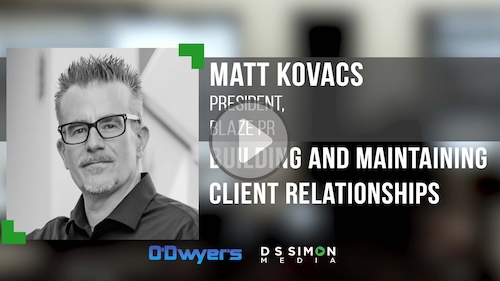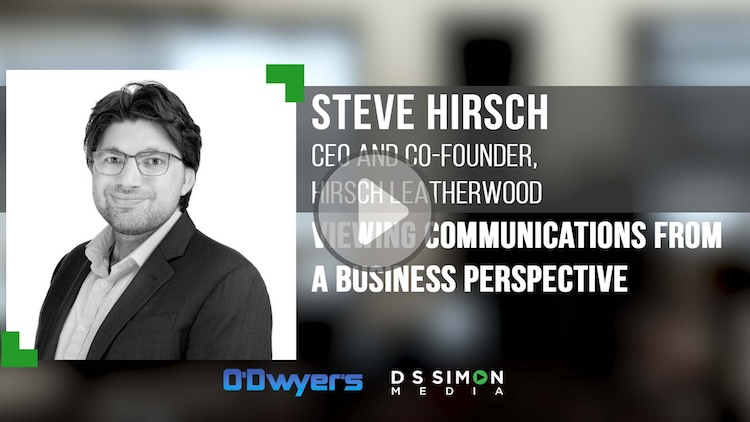|
|
“Revolutions never go backwards” – Wendell Phillips
You don’t have to work in IT to know technology is changing the way we communicate. With more than one billion active Facebook accounts and over 100 million active Instagram users, digital communications has had a profound effect on the way humans communicate. However, social media isn’t the only thing changing in the digital realm.
As the packaging surrounding communications continues to change, practitioners must stay attuned to the digital trends that shape our industry. We are only as strong as the tools we use to connect with each other. Looking into our crystal ball, here are five things public relations practitioners should keep their eye on as MarCom strategies continue to evolve.
Virtual Reality
If you put together a list of current tech buzzwords, virtual reality (VR) would likely be at the top. In 2014, a Facebook acquisition sparked mainstream excitement around VR, and people have been no less than obsessed with the technology ever since. An industry study found that people are more likely to buy from brands that use virtual reality.
Organizations of all shapes and sizes are harnessing the power of VR. One popular example is the Mercedes-Benz “drive along” commercial. The brand used 360-degree video as one of their vehicles was driven along the California coastline. Viewers were captivated by the video that seemed to transport them from wherever they were viewing to inside the vehicle.
While the real opportunity lies in the use of VR goggles, most marketers can use this type of technology across platforms and still convey an immersive virtual experience of using a product to consumers.
Augmented Reality
As opposed to virtual reality, which constructs a user immersion into a digital experience, augmented reality (AR) projects digital images onto objects in the physical world. According to a recent report, only 25% of marketers are currently using augmented reality. However, that certainly does not suggest it is irrelevant.
When it comes to marketing communications, the paradigm shift from print to digital in the last few decades has allowed digital content marketing to replace traditional strategies like billboards and brochures. We now rely on digital information to supplement the physical experiences we have each day. Now, thanks to the rise of AR technology, marketers have begun to blend how they communicate to consumers in both the digital and physical realms.
One key way that augmented reality can boost promotional outcomes is through the use of interactive advertisements. From creating ads that can be scanned to curating digital experiences for a particular geolocation, brands now have the ability to immerse consumers through an interactive AR experience.
Robotics
Engineers are creating robots to solve problems in unprecedented manners. A recent market research report projects the global robotics market will be worth more than $18 billion by 2021.
Robotics technologies now have the ability to do everything from diffusing a roadside bomb to folding a freshly dried t-shirt with impeccable creases. Innovations in artificial intelligence, navigation and sensor technologies are just some of the driving forces behind the rise of robotics. Just as the personal computer did in the 1990s, we may be in the midst of a major shift in standards fueled by new and innovative robotic technologies.
For communications professionals, robots (and we don’t mean Twitterbots) can improve customer relations and sales ventures. Through the use of machine learning technology and interactive capabilities, the world of MarCom is becoming more and more automated. The next time you’re at a trade show or large-scale event, take note of how many robots are demonstrating new products or services for the audience.
Machine Learning
Often confused with the cognitive capabilities associated with artificial intelligence, machine learning isn’t trying to replace humans. Rather, it was developed to make our lives easier, especially for marketers. We’ve all had our crash course in SEO, programmatic buying and other new technologies, but the power of machine learning is still misunderstood by many. Machine learning is poised to disrupt the marketing strategy processes we use today.
Conducting market research and deriving actionable insights can be a challenge for brands. Machine learning uses problem-solving algorithms to understand behavioral and contextual data. Where marketing analytics fall short, machine learning is able to pick up by processing large volumes of data and converting it into information that can easily be used to inform your strategy.
User Experience
To say consumers are tech savvy would be an understatement. In our digital world, we demand our online encounters with brands be efficient, two-way interactions that are both practical and aesthetically pleasing.
An optimized user experience gives users what they need, when they need it, in a way that makes them want to come back for more. Whether it is a physical product, website, mobile app, or social media page, understanding how the form follows its function ultimately impacts brand perception and successful execution of strategy.
The technological innovation we’ve seen in recent years has made it easier for organizations to engage and connect with their audiences. It has also raised customer expectations and will continue to challenge the status quo of marketers to meet customer’s demands. By practically implementing emerging technologies into communications strategies, organizations can help their users meet the needs of tomorrow, today.
***
Dave Dykes and Tommy Morgan are in the PR Group at Sage Communications.

 Dave Dykes (L) & Tommy Morgan authored this article.
Dave Dykes (L) & Tommy Morgan authored this article.








 Have a comment? Send it to
Have a comment? Send it to 
No comments have been submitted for this story yet.